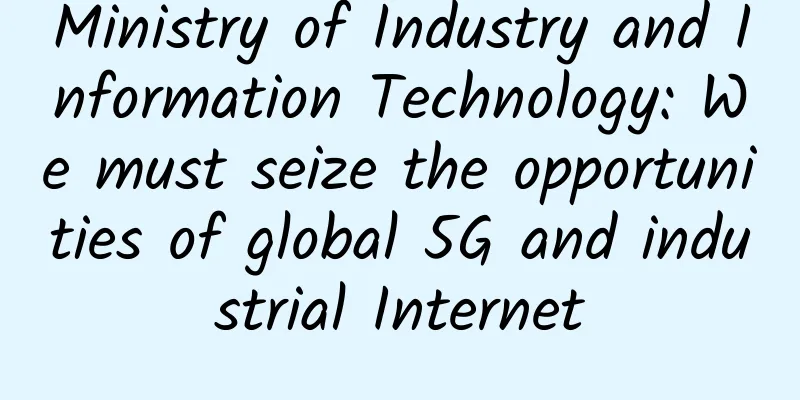After China leads the world in 5G, beware of being "led by the pace"

|
From the blank of 1G to the comprehensive leadership of 5G, China's mobile communications industry has finally reached the peak after years of hard work, and has been moving faster and better under the background of the country's high attention and accelerated construction of new infrastructure. However, there have been some noises around 5G recently, and some even took things out of context and fabricated them out of thin air, which needs to be vigilant.
At the 2020 China International Information and Communication Exhibition held last week, the speeches of some experts and guests such as Academician Wu Hequan were deliberately distorted to attack my country's 5G industry, using the same method as some previous pessimistic remarks. From the complete speech records, we can see that industry insiders raised questions based on the positive situation of my country's 5G and offered suggestions for solving the problems. For example, Ding Yun, Executive Director of Huawei and President of Carrier BG, advocated working together to make China's 5G the most successful 5G from the perspective of user experience and business closed loop. Some people unilaterally magnify these problems without talking about the background, achievements, and suggestions. It can be said that they are "either stupid or bad." In addition, the development of any new technology or new industry cannot be achieved overnight. For example, mobile communications have a generation every ten years. The first few years of each generation are a process of continuous progress towards maturity. Whether it is technical and cost challenges, or "fake, dumb, and poor", they are only temporary and partial. Compared with the achievements that have been made, the flaws do not outweigh the merits. Wen Ku, Director of the Information and Communications Development Department of the Ministry of Industry and Information Technology, also mentioned that China will be in the "introduction period" of 5G development in the next three years. It is necessary to adhere to a moderately advanced construction rhythm and strive to form a benign development model of "building to promote use". In fact, with 600,000 5G sites and 150 million package users, signal coverage from the peak of Mount Everest at 8,848 meters to 534 meters underground in a mine, as well as continuously rich application scenarios and an increasingly prosperous ecological landscape... No matter from which perspective, in the past year of 5G commercial use, China has delivered an answer that is envied by the whole world. The Chinese government's industrial policy has also provided great support for the development of 5G in terms of reducing the cost of building sites, reducing electricity costs, prioritizing the allocation of industrial funds, driving industry joint innovation, incubating and cultivating 5G innovative applications and expansion, and opening up laws and regulations and regulatory links. As early as April 2018, the National Development and Reform Commission and the Ministry of Finance issued a notice to reduce the standards for the occupation of some radio frequencies, exempting frequency occupation fees from one to three years from the date of license issuance, and reducing the frequency occupation fees for four to six years, while reducing the standards for frequency occupation fees above 3GHz. This policy has undoubtedly laid a good foundation for the commercial use of 5G in China. In the process of large-scale deployment of 5G, there are problems such as difficulty in obtaining base station sites and high entry costs. Similarly, almost all provinces have supported 5G site planning, site construction funds and site electricity in various policies. In promoting the innovation and development of the 5G industry, the state and local governments have formulated and implemented clear policies and key deployments. In April this year, the state issued a "new infrastructure" plan, clearly stating that 5G is one of the key directions. The Ministry of Industry and Information Technology has released seven 5G innovation and application improvement projects in vertical fields including medical care, education, electricity, ports, manufacturing, ultra-high definition, and vehicle-road collaboration. At the same time, it has also clearly proposed 18 measures in five aspects, including accelerating network deployment, enriching application scenarios, increasing R&D efforts, building a security system, and strengthening organizational implementation. The government work reports of 19 provinces (municipalities and autonomous regions) across the country have included "promoting the construction of 5G communication networks" in the key tasks of 2020. All 30 provinces, municipalities and autonomous regions (except Tibet) across the country have issued 5G special construction plans and action plans for industry promotion. The speed of maturity of China's 5G industry ecosystem has also exceeded expectations and is the fastest in the world. In 2019, 5G mobile phones accounted for 3.5% of the total shipments in the Chinese mobile phone market; by August this year, this proportion had rapidly climbed to 60.1%. In contrast, according to Counterpoint Research data, in August, 5G mobile phones in the United States accounted for only 13.5%. At the same time, China's 5G mobile phones have also entered the era of 1,000 yuan phones, which has greatly lowered the entry threshold of 5G. In terms of industry applications, more than 100 5G CPEs and modules have been launched on the Chinese market; according to incomplete statistics, the three major operators have more than 5,000 ToB projects in total, with total related revenue exceeding 1.5 billion. Even the US government acknowledges China's leading position in 5G, and has repeatedly resorted to unconventional tactics for this purpose. In his keynote speech at the China Initiative Conference in February this year, US Attorney General William Barr also mentioned that 5G is evolving into the central nervous system of the next-generation Internet, the industrial Internet, and the next-generation industrial systems that rely on this infrastructure. China has taken a leading position in 5G, accounting for 40% of the global infrastructure market. For the first time in history, the United States has not led the next technological era. He also pointed out that if the industrial Internet relies on Chinese technology, China will have the ability to cut off the connection between countries and the technology and equipment that their consumers and industries rely on. "Compared with the unprecedented leverage that we will succumb to China's dominance, the economic sanctions used by the United States today will pale in comparison."
In short, based on the world's largest user group, top operators and communications manufacturers, leading mobile Internet and industry information application foundation, high-quality innovation ecosystem, and most importantly, strong support from the country, China has the best soil for 5G development and provides the best development environment for industrial innovation and value creation. Looking to the future, China should attach great importance to tactical development and be confident in strategic development. This is the correct way to develop 5G in China. The pessimistic comments can be stopped. |
<<: Dell'Oro: 6 GHz - the next 5G frontier?
>>: Should you upgrade your 5G package? Read this article before deciding
Recommend
A complete guide to worry-free WiFi coverage during the Dragon Boat Festival holiday
The Dragon Boat Festival holiday has begun. Durin...
Wi-Fi 7: Everything we know so far!
Over the past few decades, Wi-Fi has become the w...
5G architecture innovation is obvious and the bearer network should fully support it
5G will become one of the hot technologies in the...
Ten features of IPv6 that are superior to IPv4
It is 2019, and there is a serious problem that b...
Prefabricated Data Centers – Winning Edge Data Centers
Speed is critical for data. Data is being gener...
RAKsmart Double 11 Spend $10 and get $10, VPS 30% off from $0.99/month, cloud server 15% off
RAKsmart launched the Double 11 Carnival pre-sale...
Yecao Cloud: Hong Kong VPS special price starting from 89 yuan per year, Hong Kong dedicated server starting from 199 yuan per month
Yecaoyun is carrying out a purchasing season prom...
What will 5G replace?
[[411646]] What will 5G replace? 5G's lightni...
Ministry of Industry and Information Technology: my country breaks through 5G key technologies and commercial equipment will be launched before the end of the year
According to CCTV reports, at the 2018 5G Summit ...
Weibu Online TDP: 99.97% accuracy, how low can the false negative rate be under high-intensity confrontation?
On March 6, 2022, the "Attack and Defense Co...
Cisco's Wei Songbin: Cisco makes people's work and life smarter, simpler, safer and more convenient
[51CTO.com original article] Reporters have atten...
India's 5G auction ends: government earns $10.6 billion, but no one is interested in 700MHz
India’s latest spectrum auction ended after two d...
Edge cloud and 5G will impact the next era of networking
While this year has presented many challenges, we...
What is structured cabling? What are the benefits of structured cabling?
In the world of cabling, the term structured cabl...
Why do we need RPC when we have HTTP?
This article briefly introduces the two forms of ...









